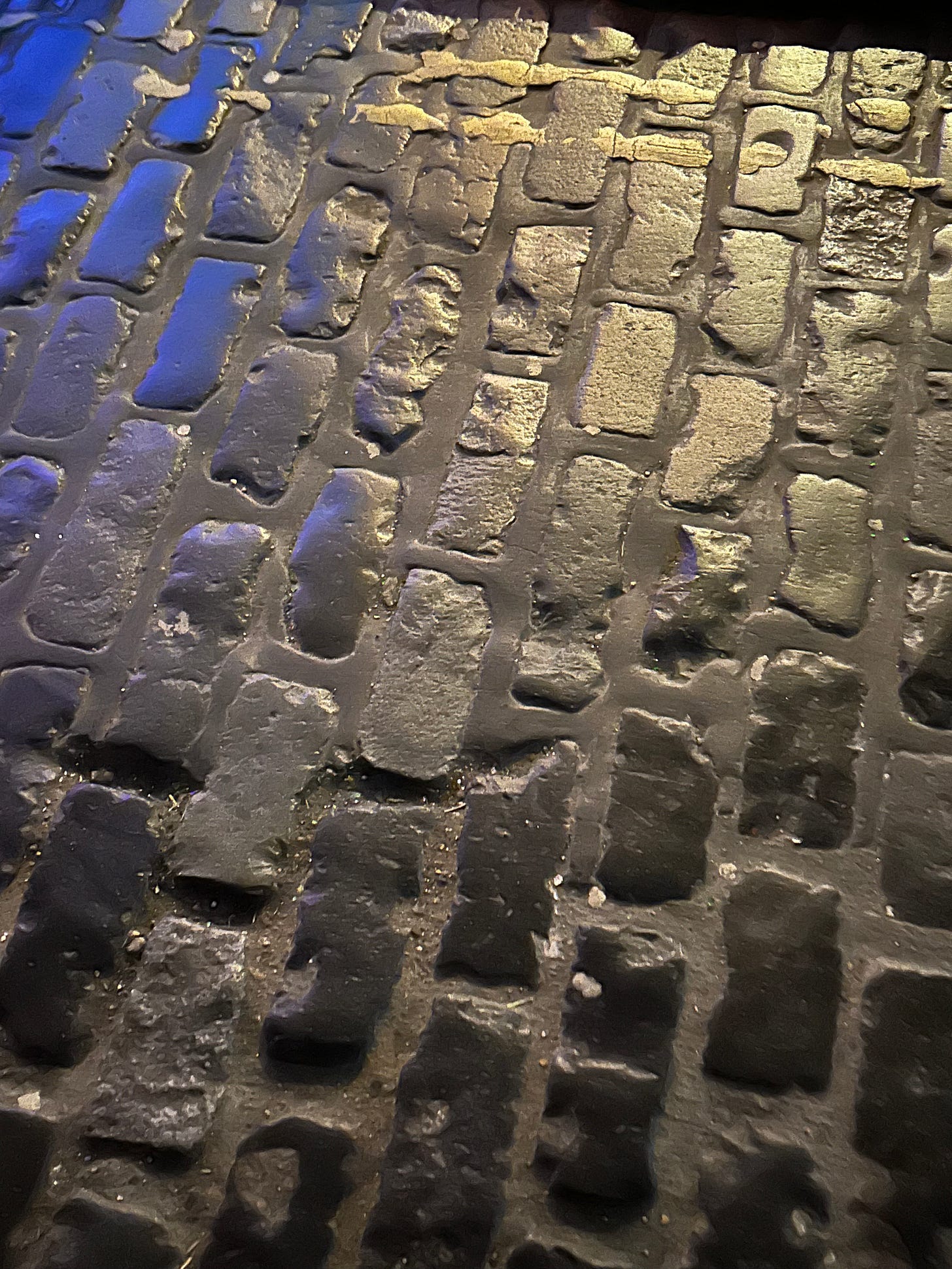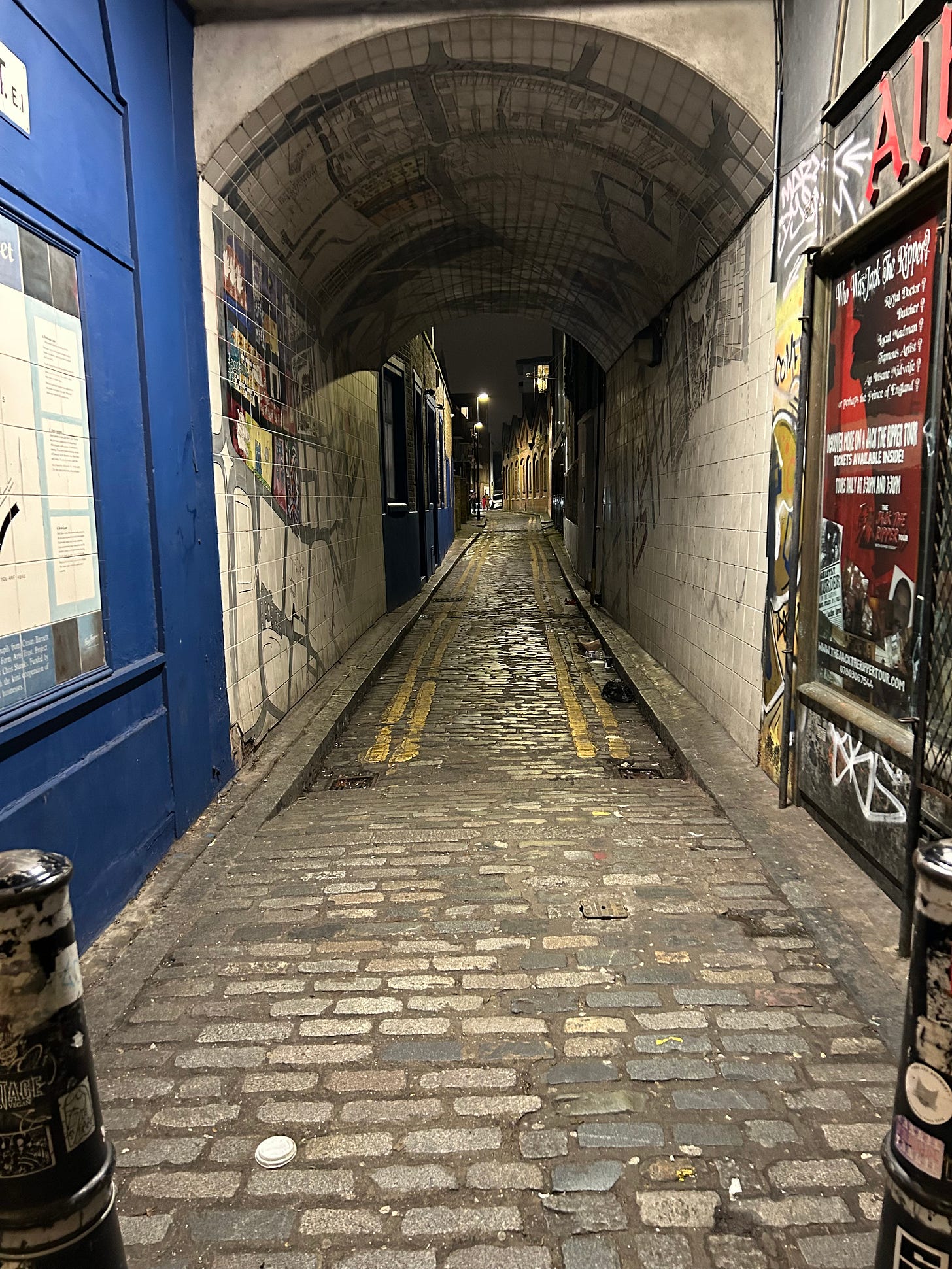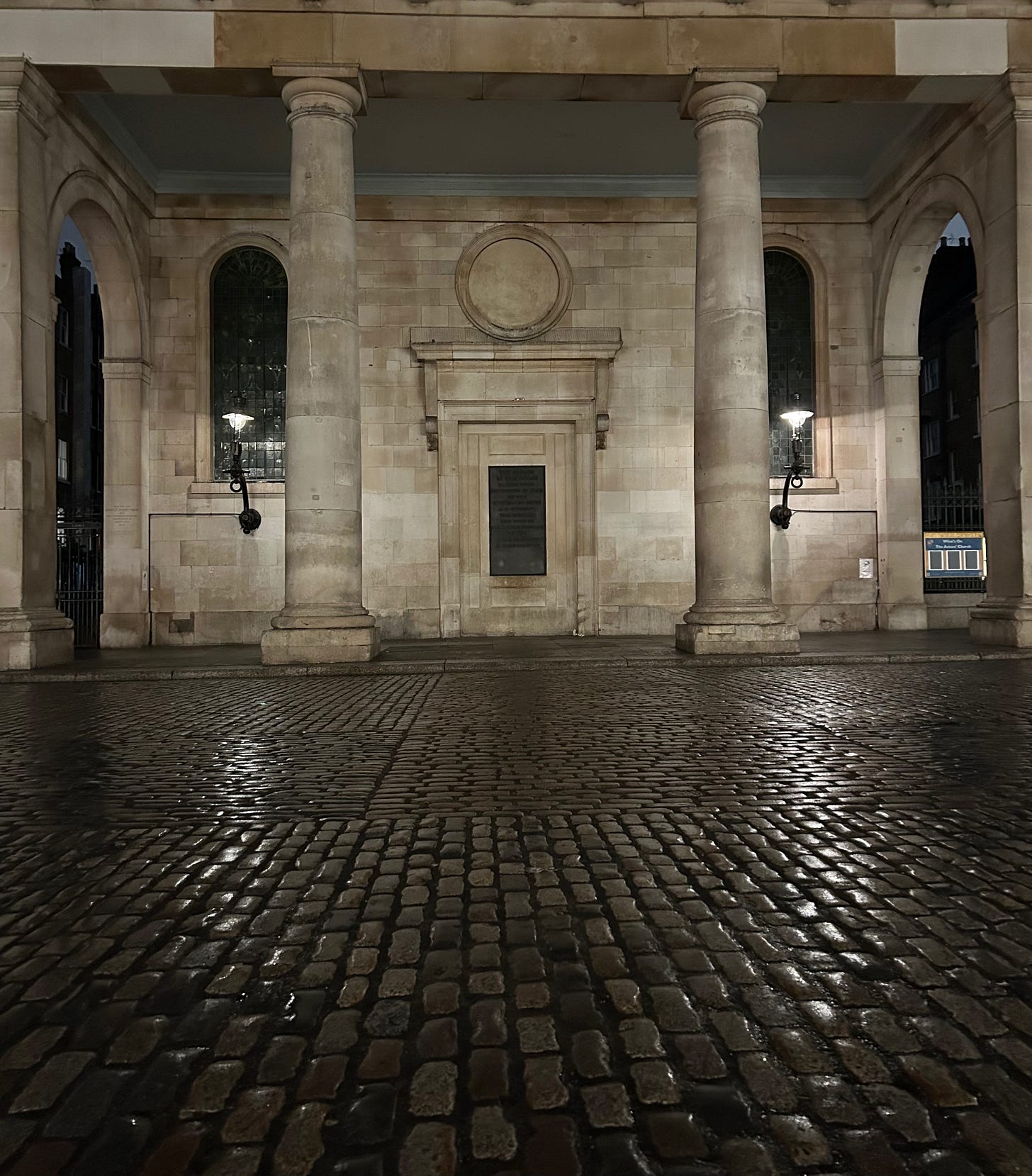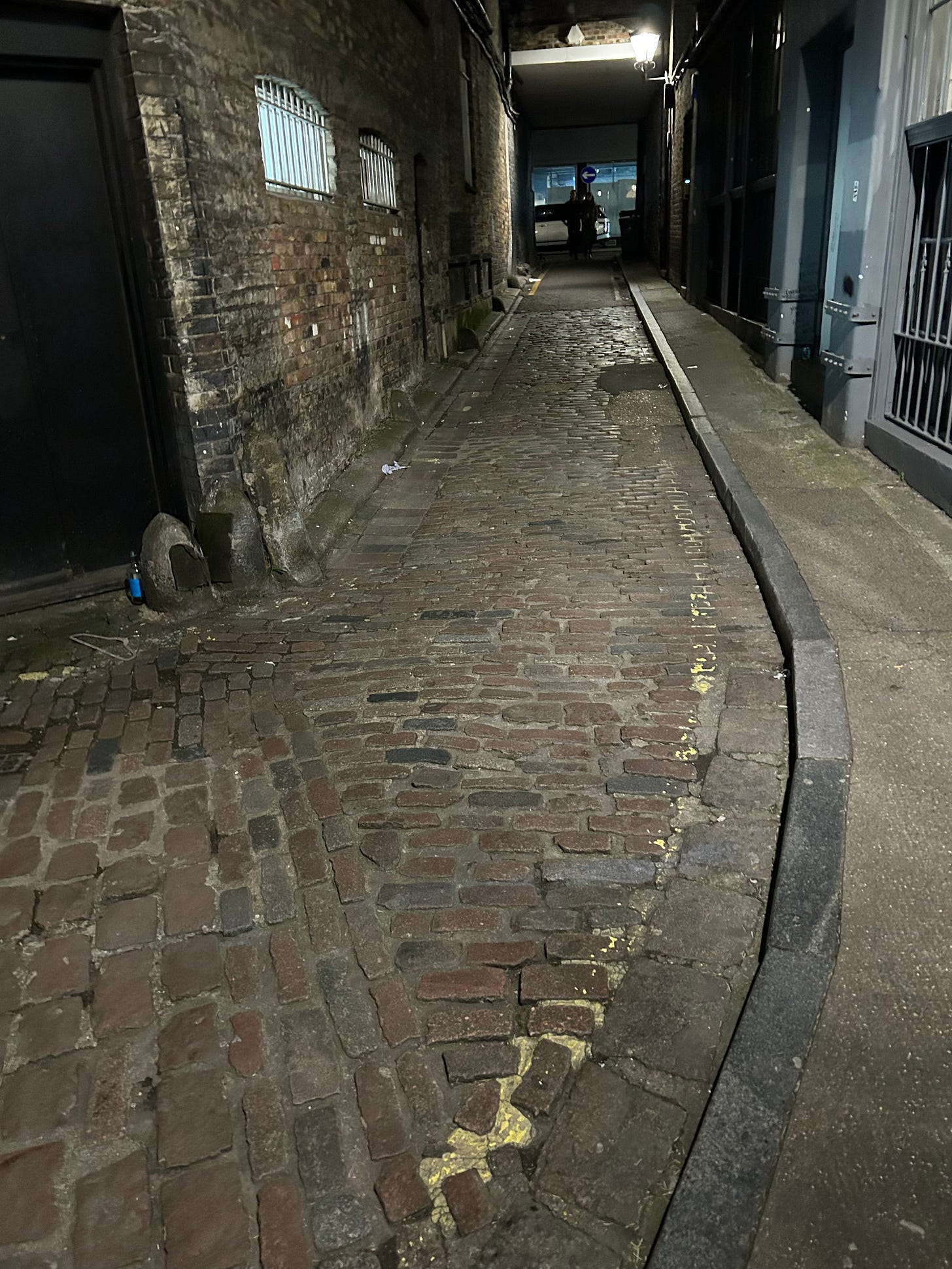One of the great romantic images of Victorian London is that of narrow, cobbled lanes down which horses’ hooves echo before fading from sound and sight into a swirling fog. While there’s some truth to this fantasy, it’s not altogether correct in the grammatical sense. Cobbles, properly speaking, are imperfect, rounded stones like the sort collected from riverbanks, and were – and still are – found along villages roads, small town lanes, and college passageways outside of the metropolis.
In London paving the main thoroughfares with cobblestones would have created a jostling, uncomfortable journey for human and horse alike. With the tide of private and commercial conveyance rising throughout the 19th Century, a smoother and swifter means of transport over London’s thousands of miles of roadway became a necessity, and the streets became paved not with cobbles but with setts. These, like cobblestones, are composed of granite or limestone; hardy enough to withstand wear and weather but fashioned into square or rectangular bricks and arranged to create a flat surface easier for man, horse, and cart to pass over. Sunken and cemented within the ground, they had the effect of a brick wall laid on its side and became the common means for paving the great canals down which London’s horse-led carts, cabs, carriages, and omnibuses streamed.
The 20th Century saw innumerable London streets torn up and repaved with asphalt, which is both cheaper and easier to work with. Yet not all the Victorian Era setts were replaced. There remain many quarters where the 200-year-old roads can still be seen and enjoyed.
Many of the remaining setts are in remarkable condition despite the foot, hoof, and wheel traffic that has ground over them, to say nothing of the heat, cold, sleet and rain that have beaten down on them throughout the decades. Today, one will see bicycles and delivery scooters shoot along them with little trouble despite how less-planed they are compared to modern asphalt roads. There are some signs of wear, where the underlying ground has sunk or swelled to create dips and bulges that test a car’s suspension, but the setts themselves are often still fixed in place and in good shape, with a few battle scars in the form of chips, cracks and missing chunks that add to their character.
They can be found all over London, and one often walks or drives over them without even noticing. Those who look for them – those who seek the London of old – will find them laid out in both popular and isolated spaces alike, so that little effort is needed to search them out. The East End quarters of Whitechapel and Spitalfields, where Adam Cole spent most of his formative and working years, have large patches and whole lanes of setts in situ, often abutting with asphalt roads which threaten, one day soon, to consume these vestiges of 19th Century street life. One of the more authentic Victorian experiences is to step north off the Whitechapel High Street and enter Gunthorpe Street (nee George Yard in Victorian London), which is a prime example of the sort of dark, claustrophobic, sett-laid lanes one dreams of finding.
Here, the stonework is often a little precarious in the way it sinks and bulges on the way up to Wentworth Street, where a vast grid of them becomes compressed on either side by asphalt. Adding to the historical aesthetic is the knowledge that at the top of Gunthorpe Street, in August of 1888, was discovered the horribly stabbed remains of Martha Tabram, thought to be the first victim of Jack the Ripper. This means the modern wanderer can step along the very stonework both victim and murderer likely traversed that fateful night.
Elsewhere, in Spitalfields, one can wander the beautiful Georgian terrace and iron bollard lined streets around Fleur De Lis Street, off Commercial Street, and be steeped in absolute tradition.
While Heneage Street, too, offers a long stretch of sett paved lane, enticing anyone standing at the busy, modern Brick Lane end to saunter forward into this dark well of old London.
Further east, the streets of Limehouse and Wapping around the old, converted Thames-side wharves are a feast of aging brickwork, both overhead and underfoot. A stroll along the cavernous lane of Wapping Wall on a quiet evening will bring to life an ethereal sense of displacement in both time and space.
The West End, too, has its samples, including around touristy Covent Garden and its vehicle-free piazza of shops and restaurants.
They can also be enjoyed down the historic lanes of Middle Temple off the Strand, to say nothing of various mews and back lanes around Marylebone, Fitzrovia and Mayfair which continue to embrace the romantic elegance of their past.
The best time to experience an atmospheric amble is in the late evening or overnight hours. Less traffic allows one to more safely walk the sett-laid roadways, enjoying the unique beat each footfall makes over the aging stonework. If it happens to be raining or has just recently rained all the better, for the damp gives lime and granite a slick lustre that appeals to the quixotic eye, especially when struck by the glow of lamplight at just the right angle. A late-night stroller of the setts will be hard-pressed to not find his or her mind drawn back through time, enlivening the experience with the imagined clopping of hooves, the grind of hansom cab wheels, and the calls of newsboys and street vendors.
All that said, setts as a word does not dance in the ear or fire one’s fantasies the way cobblestones can. It’s rare to ever hear the word setts used, with most novels and reference materials to Victorian London solely mentioning the cobbled lanes and byways of the city. No starry-eyed daydream of the bygone city ever conjures setts over cobbles, and so it may be that the latter should always be used during any idealistic contemplation of the streets in preference to the more grammatically correct word.
All photos by the author.















